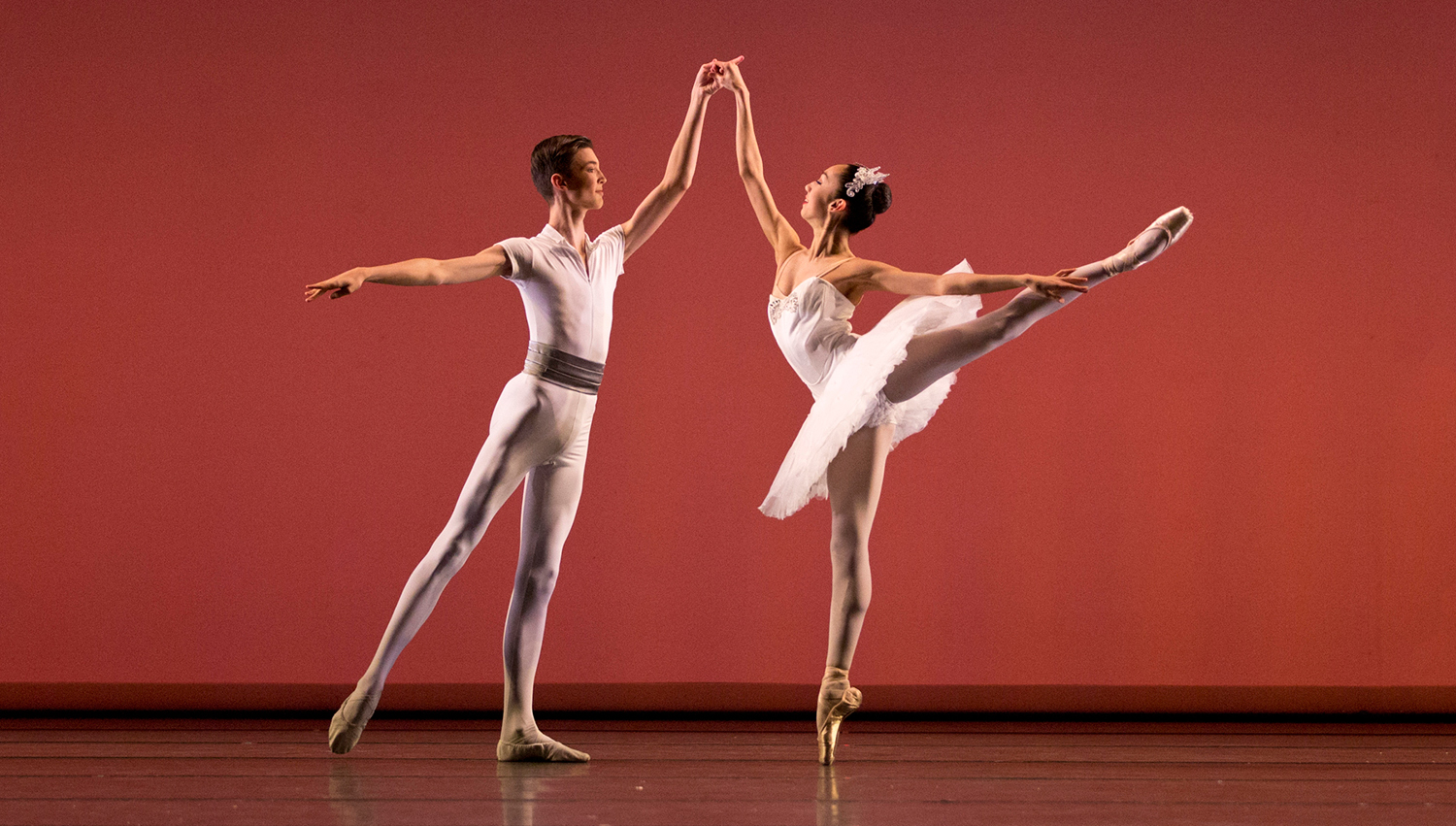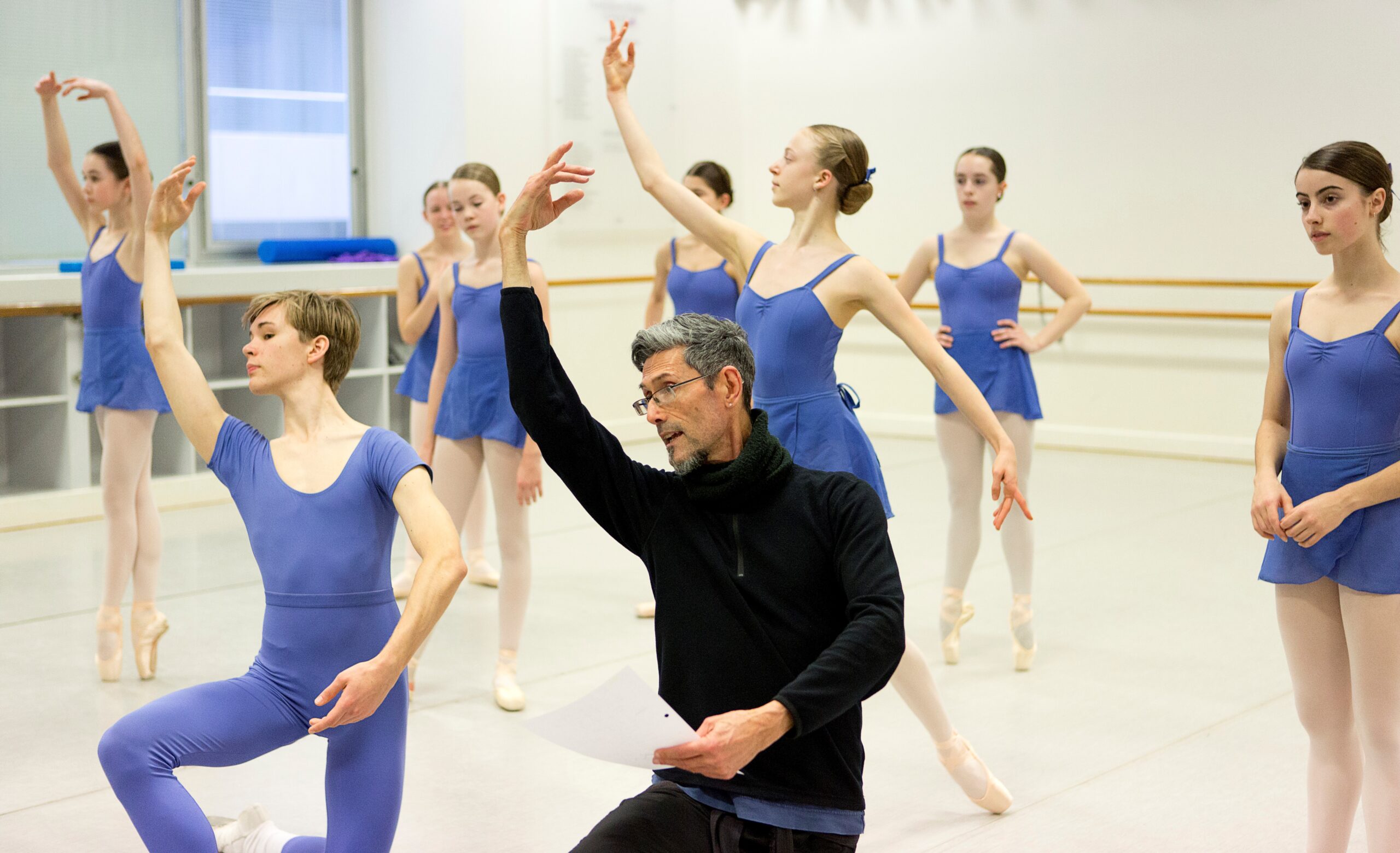Reaching Perfection: The Australian Ballet School Showcase 2017
Have dancers reached a point of technical perfection? The Australian Ballet School students come close to that unattainable word.
The Australian Ballet School proves what dance teachers and industry leaders have been saying for the last ten years. The expectation of dancing technique has truly improved beyond the scope of our imaginations.
A white flurry of tutus bursts onto the stage in a ‘kaleidoscopic’ effect, almost blurry to the naked eye. More than 100 students run in weaves and spirals as they morph into their next intricate pattern or pose. The purpose of this piece is to surprise the audience with an illusion, allowing them to gush at its spectacle. Grand Défilé is the perfect opening and instantly parades the passion, dedication, and perfectionism the dancers share.


George Balanchine’s Serenade featuring Serena Graham, Emma Koppelman and Matthew Bradwell.
Sergey Konstantinov.
Courtesy of The Australian Ballet School.
Following this act is a kind of oceanic experience from George Balanchine’s Serenade. This ballet is more suited to an older performer, however, the teenaged dancers bring emotional maturity to the role that tugs on the audience’s heartstrings. With compliments to Ballet Mistress of The George Balanchine Trust Victoria Simon, her re-staging of this ballet is a modern vision. The dancers let their hair down (literally) and relax into the complexity of this remarkable work.
The Level 8 students return in a classical celebration piece titled Allegro Vivo. Rooted in traditionalism, it is clear the choreographer Mark Annear is challenging the male dancers particularly so to reach new balletic heights. There is precision in each movement, which has clearly been refined in training back at the studio. The dancers show no fear prior to a pirouette or a pas de deux and it is this confidence the audience can feel safe to plunge into the beauty of this dance.
The classical roots appear again in Mr. Knobloch’s Haydn Symphony, uniting melody and movement. Each sound has an accompanying new movement and the dancers perform without any doubt. It is a testament to the students for being able to execute every single line, shape and change of direction with the utmost energy and efficiency.


Garland Waltz, Level 5 Students. Photo by Sergey Konstantinov.
Courtesy of The Australian Ballet School.
Choreographer Simon Dow adds a little flavour to his piece by fragrancing the audience’s eyes with traditional flower arches during Tchaikovsky’s Act I of The Sleeping Beauty. Garland Waltz indulges in classical ballet but with the spark of tarantella. The Level 4 (now Level 5) students have natural smiles and energy when performing this piece. These dancers are a snapshot of what our future performers will look like.
The perfect ending to the classical numbers is Mark Annear’s Jubilation. The dancers are neo classically dressed in tie-dye peach whilst fluttering en pointe. Swirls, twirls, and smiles encapsulate the stage as the dancers explore the pure joy of being a performer. Inspired by Alexander Glazanov’s waltz from the ballet Lady Soubrette, the dancers take on a natural happiness by allowing the music to move them.


Level 7 Students in Gorilla. Photo by Sergey Konstantinov.
Courtesy of The Australian Ballet School.
We move into contemporary works, where the dancers explore the concept of being animalistic. Misinterpreted as harmful and boasting creatures, the gorilla is described as a peaceful animal in this work.
“The human mind tends to fear that which exposes its true identity, or what it does not understand,” quoted choreographer Lucas Jervies.
The complexity of the score, the fast-paced movements and the isolations of the body all illustrate a close-to-perfect interpretation of Mr. Jervies’ vision. The solo and pas de deux sections of this work are so fluid, it is as if the audience is kept on a spinning wheel. Leading into the second contemporary piece, Margaret Wilson’sVitae contrasts Gorilla with a more graceful embodiment of an experimental and physically challenging piece. The dancers are en pointe, but their use of parallelism and bare legs tell us this is not a classical piece at all. Many contemporary dancers would relish in this type of choreography because of its subtle classical and contemporary blends.


The Call featuring lead Shunyo Mori. Photography by Sergey Konstantinov.
Courtesy of The Australian Ballet School.
The Level 8 students return in the finale of Simon Dow’s The Call. Stripped almost bare, the ensemble performs an emotional and technically rigorous work, exploring their limits and beyond. This piece shows the dancers are truly ready to grapple with the professional industry upon graduating.
Director Lisa Pavane, lecturers, guest choreographers, and dancers should all be commended for such a delightful evening of dance.
Sorry, the comment form is closed at this time.



